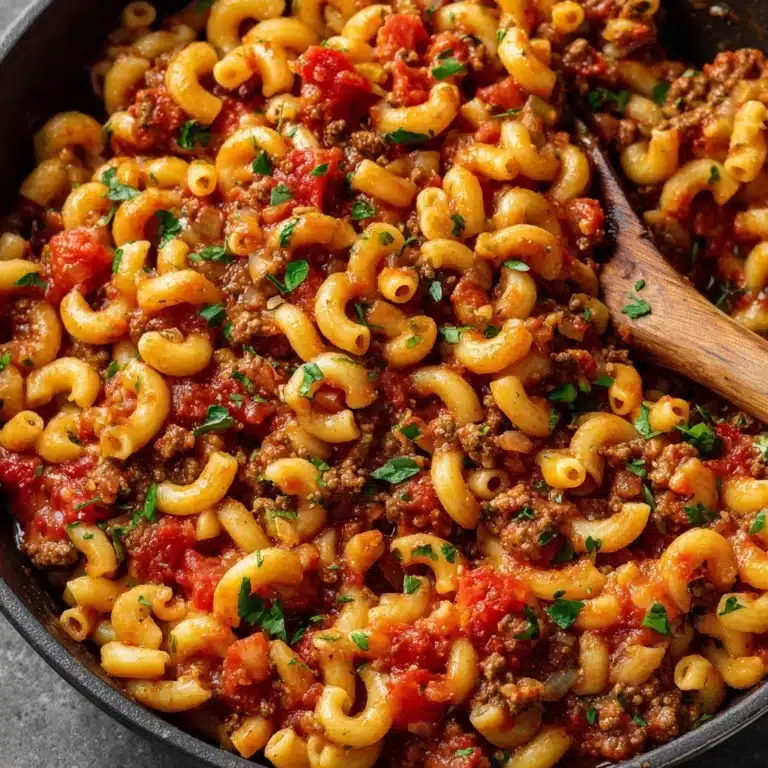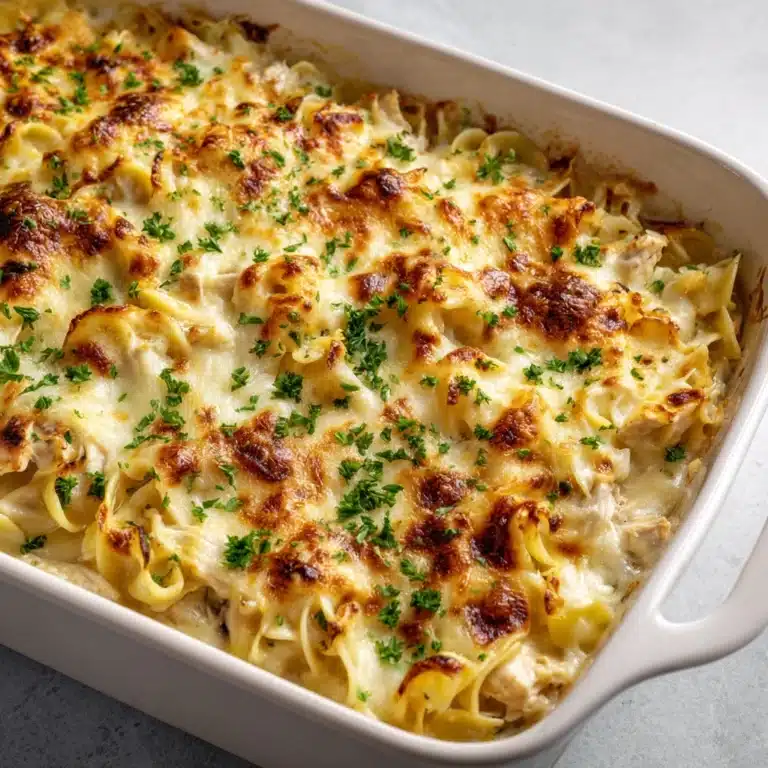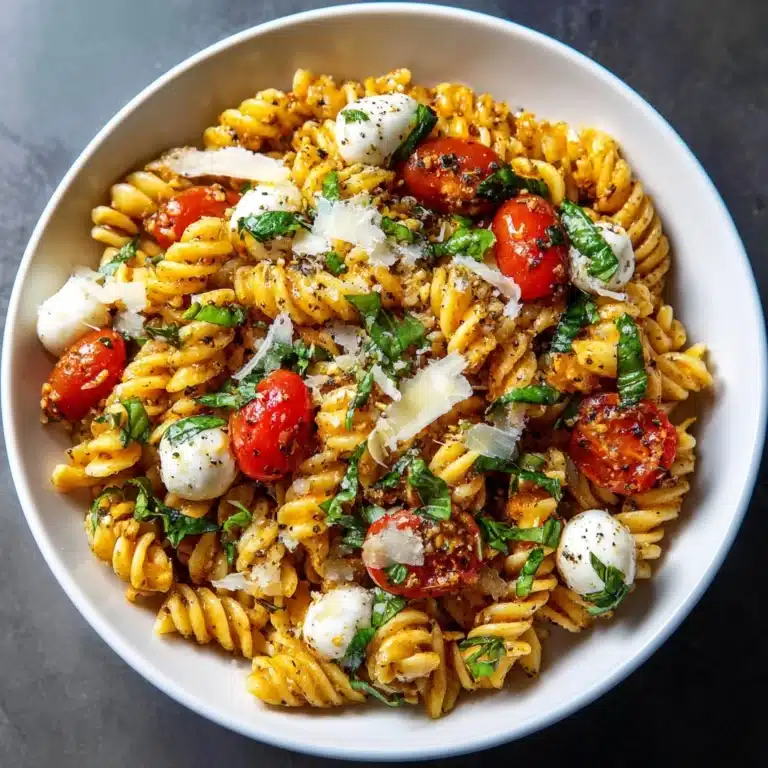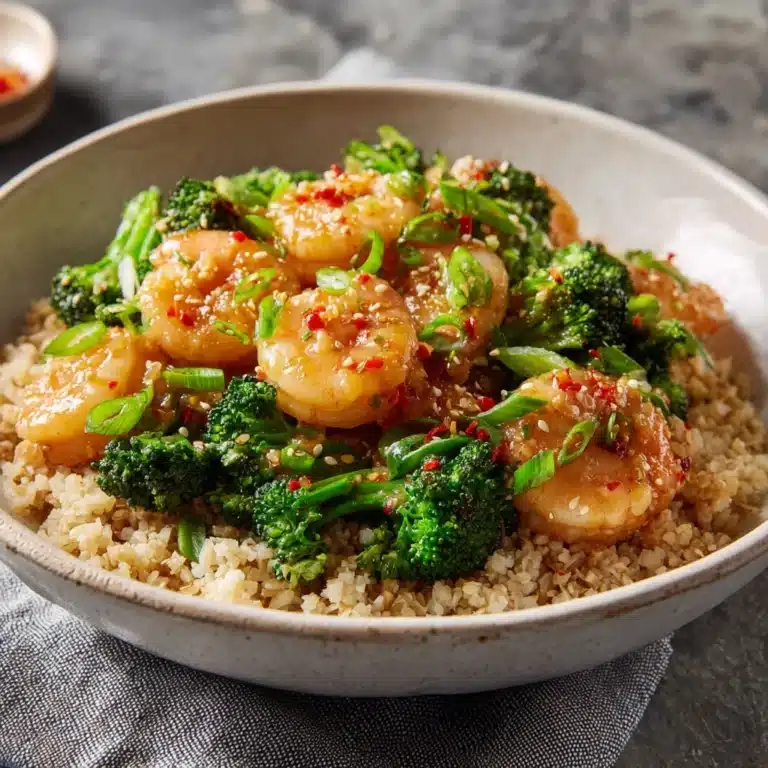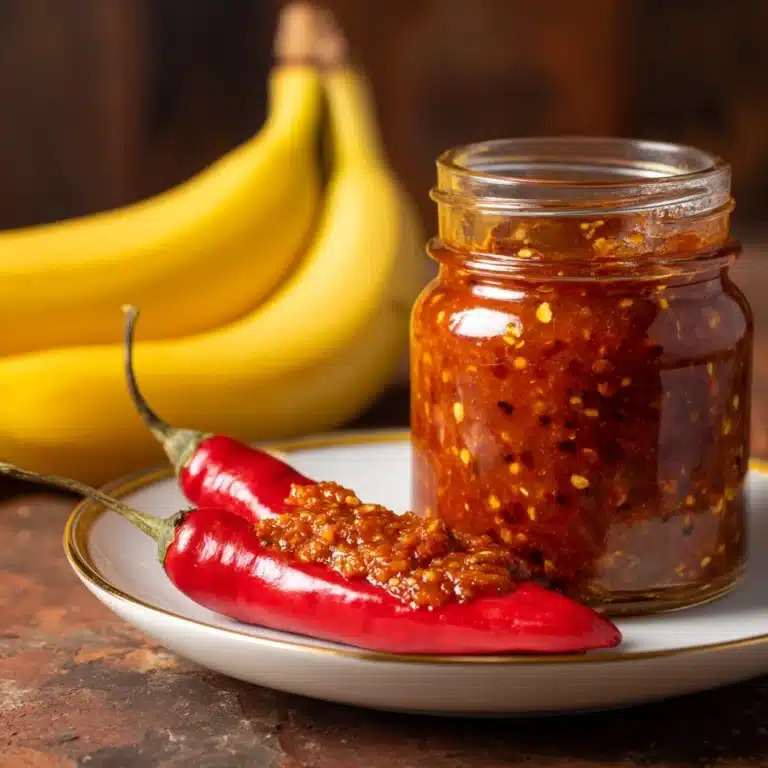Cheesy Gochujang Risotto Recipe
Cheesy Gochujang Risotto is a heavenly mashup that brings together the soul-soothing creaminess of classic Italian risotto and the punchy, vibrant flavors of Korean gochujang. Every bite offers velvety rice with a luscious blend of melted cheeses, and just the right amount of heat and umami from that iconic chili paste. This dish is perfect for anyone who loves comfort food with a twist and wants to wow their taste buds. Whether you’re making it for a cozy night in or to impress friends at your next dinner party, this fusion recipe knows how to steal the show.
Ingredients You’ll Need

Ingredients You’ll Need
You only need a handful of simple but transformative ingredients for Cheesy Gochujang Risotto, each carefully chosen for the role it plays in building rich flavor and creamy texture. Trust me—every element counts, so don’t skip a thing!
- Butter: Starts the base with richness and helps create that ultra-silky texture.
- Olive oil: Blends with the butter for even cooking and adds lovely depth.
- Yellow onion (finely diced): Brings sweetness and aromatic flavor that’s key for any good risotto.
- Garlic (minced): Adds a savory kick and wonderful aroma—don’t let it burn!
- Arborio rice: This short-grain rice is what gives risotto its signature creaminess, thanks to its high starch content.
- Dry white wine (optional): Adds tang and balance; if you skip it, just use more broth.
- Chicken or vegetable broth (warmed): Warm broth keeps the cooking seamless and infuses flavor into every bite.
- Gochujang (Korean chili paste): The not-so-secret ingredient that adds spicy, sweet, and umami-laced magic to your risotto.
- Parmesan cheese (grated): Lends sharpness and classic risotto luxury—freshly grated is best.
- Mozzarella cheese (shredded): Melts beautifully, giving each spoonful the most satisfying cheesy pull.
- Soy sauce: Deepens the savory goodness and connects the Korean and Italian flavor profiles.
- Sesame oil: Just a drizzle adds warmth and nutty fragrance near the finish.
- Salt and black pepper: Essential for balancing and finishing the dish, so season to taste at the end.
- Sliced green onions and toasted sesame seeds (optional garnish): These brighten up the plate and add extra crunch and color.
How to Make Cheesy Gochujang Risotto
Step 1: Create the Flavorful Base
Start by heating your butter and olive oil together in a large saucepan over medium heat. Once they’re shimmering and blended, add the diced onion and cook, stirring, for about 3 to 4 minutes until soft and translucent. Add the minced garlic—just for 30 seconds—to release its aroma without letting it brown. This fragrant base is the secret for infusing every bite with a deep, comforting flavor.
Step 2: Toast the Rice
Next, stir in your arborio rice and make sure each grain gets a glossy coat of fat and flavor. Let it cook, stirring constantly, for 1 to 2 minutes until it looks slightly translucent around the edges. This step might seem simple, but it’s pivotal: toasting the rice brings out a subtle nuttiness and lays the perfect foundation for Cheesy Gochujang Risotto’s creaminess.
Step 3: Deglaze and Build Creaminess
If you’re using white wine, pour it in now and stir until the liquid is almost fully absorbed—it lifts those delicious caramelized bits from the bottom of the pan. Begin adding your warm broth just half a cup at a time, stirring frequently and letting the rice soak up each addition. This gentle, gradual absorption is where the risotto magic happens! Keep going for about 20 to 25 minutes, watching the grains plump up into dreamy, tender morsels.
Step 4: Stir in the Fusion Flavors
Once the rice is creamy and just al dente, reduce the heat to low and stir in the gochujang, soy sauce, and sesame oil. Then, toss in the grated Parmesan and shredded mozzarella. Now you’re officially on your way to molten, cheesy bliss—stir everything well until both cheeses melt completely into the risotto and that snappy red color glows through. Taste and finish with salt and pepper as needed.
Step 5: Serve and Savor
Spoon your Cheesy Gochujang Risotto into shallow bowls while piping hot. Top with a scatter of sliced green onions and a sprinkle of toasted sesame seeds for that perfect finishing touch. The result is a bowl that looks as good as it tastes, with vibrant color, gooey cheese, and a hint of heat in every creamy forkful.
How to Serve Cheesy Gochujang Risotto
Garnishes
Take your Cheesy Gochujang Risotto from great to unforgettable with a few simple garnishes. I love to scatter thinly sliced green onions over the top for an extra burst of freshness and color—they cut through the richness beautifully. Sprinkling toasted sesame seeds brings a nutty crunch, and if you’re feeling extra, a drizzle of sesame oil or even a few chili flakes amps everything up just a notch more.
Side Dishes
This risotto can fly solo as a satisfying main, but it also shines surrounded by a cast of complementary sides. Try pairing with grilled shrimp or sautéed mushrooms for a protein-packed upgrade, or add a bright, tangy cabbage slaw to balance the deep flavors. A jammy soft-boiled egg on top works wonders for added decadence and ties in those Korean comfort food vibes.
Creative Ways to Present
Cheesy Gochujang Risotto is tailor-made for a little dramatic presentation! Serve it family-style from a big, shallow bowl for a true centerpiece effect. Or try plating individual portions in small ramekins with a parmesan crisp on top for an elegant starter. For your next brunch, tuck a spoonful of risotto inside roasted bell pepper halves or hollowed tomatoes, then broil briefly for a melty, showstopping bite.
Make Ahead and Storage
Storing Leftovers
If you find yourself with extra Cheesy Gochujang Risotto (lucky you!), let it cool to room temperature and then scoop it into an airtight container. It’ll keep in the fridge for up to 3 days without losing its flavor. When storing, pressing a piece of plastic wrap directly on the surface helps maintain maximum creaminess.
Freezing
While risotto is best enjoyed fresh, you can absolutely freeze Cheesy Gochujang Risotto if needed. Portion it out and allow it to cool before freezing in containers or resealable bags, pressing out as much air as possible. It keeps well for up to one month—just note that the texture may become a tad softer after thawing, but the flavor stays delicious.
Reheating
To bring leftover risotto back to life, add a splash of broth or water and reheat gently in a saucepan over low heat, stirring constantly. You can also microwave it in short bursts, pausing to stir and add liquid if needed. This helps revive the creaminess, and you can always finish with a fresh sprinkle of cheese or a dab of butter if you want to make it extra-luscious again.
FAQs
Can I make Cheesy Gochujang Risotto vegetarian?
Absolutely! Just use a good-quality vegetable broth instead of chicken broth and double-check that your gochujang and cheese are fully vegetarian-friendly. You’ll get every bit of flavor, guaranteed.
How spicy does the gochujang make this dish?
Gochujang brings a mellow, complex heat rather than a fiery blast, especially when balanced by cheese. If you’re sensitive to spice, start with a little less and add to taste—this risotto is remarkably customizable.
Can I substitute another type Main Course
For the creamiest texture, arborio rice is your best friend. If you must substitute, try another short-grain variety like carnaroli or sushi rice, but avoid long-grain types since they won’t give you that classic risotto silkiness.
What can I use if I don’t have mozzarella?
You can swap in another mild, melty cheese like fontina, gouda, or even a bit more parmesan. Just keep in mind that mozzarella’s stretchiness is part of what makes Cheesy Gochujang Risotto so fun and satisfying!
How can I add more protein?
Add-ins like grilled shrimp, sautéed mushrooms, a poached or soft-boiled egg, or even shredded rotisserie chicken marry beautifully with Cheesy Gochujang Risotto and easily bump up the protein content while complementing the dish’s bold flavors.
Final Thoughts
If you crave comfort food that dances with flavor, you owe it to yourself to try Cheesy Gochujang Risotto. Its fusion of creamy, cheesy depths and zippy Korean heat is pure weeknight joy, and honestly, it’s way easier to make than you might think. So gather your ingredients, grab a spoon, and get ready to discover your new favorite risotto!
Print
Cheesy Gochujang Risotto Recipe
- Total Time: 40 minutes
- Yield: 4 servings 1x
- Diet: Non-Vegetarian
Description
Indulge in the perfect fusion of Korean and Italian flavors with this Cheesy Gochujang Risotto. Creamy arborio rice cooked to perfection with a spicy kick from gochujang, and a decadent mix of Parmesan and mozzarella cheeses.
Ingredients
For the Risotto:
- 1 tablespoon butter
- 1 tablespoon olive oil
- 1 small yellow onion (finely diced)
- 2 cloves garlic (minced)
- 1 cup arborio rice
- ¼ cup dry white wine (optional)
- 4 cups low-sodium chicken or vegetable broth (warmed)
- 1 tablespoon gochujang (Korean chili paste)
- ½ cup grated Parmesan cheese
- ½ cup shredded mozzarella cheese
- 1 tablespoon soy sauce
- 1 teaspoon sesame oil
- Salt and black pepper to taste
- Sliced green onions and toasted sesame seeds for garnish (optional)
Instructions
- Sauté Aromatics: In a large saucepan, heat the butter and olive oil over medium heat. Add the diced onion and cook until soft. Stir in garlic.
- Cook Rice: Add arborio rice and cook briefly. Pour in wine if using. Slowly add warm broth, stirring until absorbed.
- Finish Risotto: Stir in gochujang, soy sauce, sesame oil, and cheeses until creamy. Adjust seasoning.
- Serve: Garnish with green onions and sesame seeds. Serve hot.
Notes
- Adjust the amount of gochujang based on your spice preference.
- This dish pairs well with grilled shrimp, sautéed mushrooms, or a soft-boiled egg for added protein.
- Prep Time: 10 minutes
- Cook Time: 30 minutes
- Category: Main Course
- Method: Stovetop
- Cuisine: Korean-Italian Fusion
Nutrition
- Serving Size: 1 cup
- Calories: 410
- Sugar: 4 g
- Sodium: 620 mg
- Fat: 18 g
- Saturated Fat: 8 g
- Unsaturated Fat: 8 g
- Trans Fat: 0 g
- Carbohydrates: 48 g
- Fiber: 2 g
- Protein: 13 g
- Cholesterol: 35 mg
